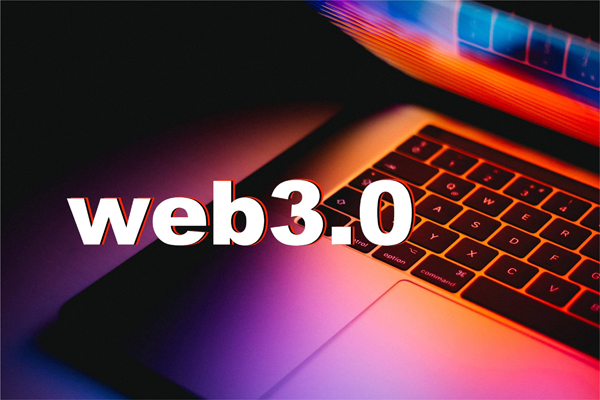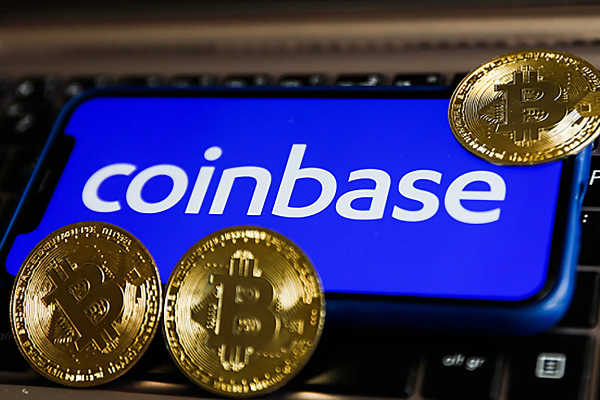How to conduct offline activities with Web3 safely, legally and in compliance with regulations?

In Web3, "organizing events" has become a standard action for almost every project party. Do you want exposure? Do you want cooperation? Organizing and participating in events is definitely one of the best ways to solve these two problems.
I don't know if you have participated in the Web3 Carnival (Web3 Festival) held in Hong Kong recently. In addition to the large summit at the main venue, this event also has a variety of surrounding activities, from cocktail parties, afterparties, technical salons, to meetups, closed-door meetings, hackathons, and forums. It can be said that the entire month of April in Hong Kong has a very high concentration of Web3.
However, many organizers will think: organizing an event is not just planning a process, inviting guests, and then finding a venue or platform to do publicity and promotion. It's very simple!
But in fact, there are still many compliance issues in organizing events, especially Web3 as an industry with financial attributes, technical characteristics and cross-border characteristics. The compliance risk of its offline activities is much higher than that of ordinary industries. Ignoring these compliance is often a taboo.
Therefore, in this article, Lawyer Mankiw systematically sorts out common legal matters in Web3 activities and pragmatic response strategies from the perspective of event organizers, combining the real logic of holding and the key points of actual operation, to help project parties and operation teams truly "hold events legally and in compliance with regulations."
Three-step compliance logic for holding events
The reason why Web3 activities are sensitive is not just because it has the shadow of "currency", but because it involves too many gray areas across industries, regions, and identities.
Therefore, the question that event organizers should really think about is: In the three stages of event planning, execution, and follow-up, have I done my "due diligence" and thought about and controlled all potential risks in advance?
Step 1: Event planning stage
What event are you going to hold? This is the first step in all compliance judgments.
When planning events, many Web3 organizers often only stay on the surface labels of "technology sharing" and "community gatherings". But from a regulatory perspective, the real key is the actual content and purpose of your event -
Are you promoting tokens? Are you organizing financing? Are you facilitating overseas platforms to expand their business in China?
These factors determine the compliance risk level of your event, not the name you use to package it.
Here, based on personal experience and judgment, lawyer Mankiw divides Web3 offline activities into three risk levels according to the actual content:
Low-risk activities
For example, purely technology-oriented Hackathons (such as ETHGlobal), R&D Workshops, and closed-door developer exchanges. Such activities are centered on code and products, do not involve financing, do not promote tokens, and have a low overall risk. But you should also pay attention to avoid using tokens for bonuses and docking results with Token projects, and beware of the question of "using technology to package and issue coins".
Medium-risk activities
Usually, activities with the nature of "promotion" or "market warming" such as industry summits, press conferences, project Meetups, cocktail parties, etc. It seems to be light socializing, but if the guest speech involves project currencies, the media follow-up is too hot, and the identities of the participants are complicated, it is easy to be questioned as "disguised marketing." Therefore, such activities require the organizer to carefully select participants, especially speakers; it is also best not to arrange KOLs in the currency circle to host, so as to avoid the formation of a "token association chain".
High-risk activities
This type is basically related to investment and financing or tokens, such as closed-door financing matchmaking meetings, private investors' meetings, and token roadshows. Once this type of scenario is open to investors from mainland China, it is very easy to step on the red lines of illegal securities issuance and illegal fundraising. To reduce such risks, you can set entry barriers in advance (such as limited to overseas licensed institutions/not involving currency), only provide information for overseas, and do not talk about "price expectations" and "investment returns" throughout the process, while retaining compliance backup records.
Many organizers may think: "My event is held in Hong Kong, how can there be a problem?" But please note: If your content or dissemination reaches users in mainland China, even if the venue is overseas, it may be considered by regulators as "providing services to domestic residents."
Therefore, the risk of an event depends not only on where you hold it and what you call it, but also on what you say, who is listening, and whether the funds flow.
In addition, when involving foreign personnel, minors, and specific professional identities (such as financial practitioners), the laws and regulations of some regions will require event filing or specific permits. If these requirements are ignored, even if the event itself does not violate the law, it may be questioned or dealt with due to inadequate identity verification.
So, when planning an event, Mankiw lawyers suggest that there are three things that must be done:
1) Substantially classify the event type to see the actual content and goals;
2) Confirm the boundaries of the event, especially whether it involves users in mainland China, sensitive countries and regions, and cross-border publicity;
3) Set the "content compliance line" in advance, that is, what words are not said, what materials are not sent, and who are not invited.
Remember: you are not planning an event process, but formulating a compliance behavior narrative. If you classify it incorrectly, you may be wrong no matter how careful you are later.
Step 2: Event execution stage
The process is determined, and then it will enter the stage of real "implementation". But it is precisely at this stage that compliance issues are most likely to be triggered due to omissions in details.
Those who have organized events know that planning is one thing and execution is another. In reality, many problems are not caused by the intentional planning, but by "accidentally touching the red line" during the execution process.
Lawyer Mankiw summarized the key issues in the event execution stage into three links:
(1) Does the promotional content cross the line?
Many organizers are prone to misleading due to improper wording when designing event materials, making PPTs, and publishing promotional materials. In particular, the following high-frequency "risk terms" should be paid special attention to:
"Coming online/issuing coins/listing"
"Airdrop" "Pre-subscription" "X-fold potential coins"
"XX investment institution leads the investment" "Well-known VC platform"
Coin price prediction, profit expectations, investment return description
Once these expressions appear, they may be identified by regulators as illegal financial activities such as "token sales promotion" and "fundraising for the public".
Therefore, it is recommended to set up a unified compliance review mechanism for promotional materials. It is best to have legal affairs or lawyers to assist in reviewing and predicting all external posters, tweets, event manuals, guest PPTs, etc., and clarify which information is "only for private talk and not for public talk".
(2) Are there risks in on-site speeches?
In forums or Meetup-type events, the content of guest speeches is often uncontrollable. But please note that as long as the event is organized by the organizer, the responsibility for the content may "fall back on you."
In practice, regulators often do not only look at whether the organizer "personally promotes". As long as you are the organizer of the event or the host platform, whether the guest "revealed" on the spot, the token roadmap appeared in the PPT, or the interview session hinted at token trading opportunities, the regulator may determine that you have failed to fulfill your content review obligations and thus bear joint risks.
Another typical "compliance hidden danger" is indirect support for overseas platforms or services. For example, a project arranged platform representatives to speak, QR code jump registration, and technology product embedded demonstrations in the event. Although the organizer did not directly involve currency or provide a trading entrance, it may eventually be classified as assisting illegal financial activities because it "provides convenience for overseas platforms to conduct business in China."
Therefore, event organizers must review the content of guest speeches in advance and remind the speakers on the spot, especially when sharing about currencies, platforms, and projects, be careful not to guide investment, show trading logic, or hint at price trends. At the same time, during the speech, try to control the venue as much as possible.
(3) Are there any loopholes in the funding and venue links?
Don’t underestimate the compliance sensitivity behind “collecting tickets” or “accepting sponsorship”. The compliance of collecting tickets with crypto assets and accepting token sponsorship varies greatly in different regions. For example, in strictly regulated regions such as mainland China, regulators have repeatedly emphasized that virtual currency cannot be used as a payment tool. If an event charges fees through tokens such as USDT, it may be regarded as providing virtual currency payment services and thus be classified as “illegal financial activities”.
Even in relatively open regions such as Hong Kong and Dubai, if the sponsor is an unlicensed overseas trading platform, crypto investment institution or other sensitive entity, the event organizer may also be considered to be “assisting unlicensed virtual asset service providers in their business”, especially when the event content includes project promotion and brand exposure, the risk is higher.
At the same time, the selection of event venues also has compliance standards, such as whether the event venue is legal and open to the public? Is temporary filing required? Does it exceed the upper limit of the number of participants? Are there overseas participants or representatives of sensitive countries? Many organizers will not consider these issues clearly in the initial planning, but in some jurisdictions, such as mainland China, once they step on the thunder, they may be directly classified as "illegal assembly" or "overseas exhibition". In Hong Kong and other places, it is also necessary to pay attention to the use of commercial venues and clarify the content of the event to the owner or management agency to avoid venue disputes caused by the "cryptocurrency circle" attribute.
In addition to the above three links, the use of data and images is becoming a new high-risk area for compliance. Common behaviors such as full-time recording and videotaping, information collection of participants, and social media live broadcasts during activities may infringe on the portrait rights and privacy rights of participants if the corresponding authorization is not obtained or the purpose is not informed, and even trigger compliance red lines in cross-border data flow scenarios.
Step 3: Event review stage
Is everything "all right" after the event is over? Lawyer Mankiw believes: not necessarily.
In actual law enforcement, many projects were eventually held accountable not because of problems at the event site, but because of the "traces" left after the event. In particular, if social media records, data archiving and sponsorship fund transfers are not handled properly, they can easily become a breakthrough for subsequent investigations.
Therefore, Mankiw reminds: A truly complete compliance closed loop must include post-event review management.
(1) Are there "compliance records"?
After the event, the project party must organize and retain the following key materials to respond to possible investigations or inquiries:
Guest speech manuscripts, PPT or speech summary versions;
On-site video/audio materials (if there is a recording);
The final version of the promotional materials and the list of distribution channels;
Registration of basic information of participants (if there is a registration link);
Contract documents such as venue rental and sponsorship agreements;
Details of event income and expenditure, especially the explanation records involving tokens.
These materials are not for "active filing", but if there is a compliance inquiry in the future, they can help the project prove the compliance intention of the event and that the organizer has fulfilled its reasonable review obligations.
(2) Is there a "speech tracing" mechanism?
If token-related content appears in the event, the organizer needs to have a speech tracing mechanism to clarify which content is provided by whom and which speech has been reviewed.
Especially for the guest's independent speech, it is recommended to clarify the legal responsibility of the guest for his or her own speech by signing a responsibility statement or risk reminder letter before the event to avoid the situation where "the guest crosses the line and the organizer takes the blame".
In addition, whether the recorded content is public or not should also be planned in advance: which content can be disseminated in the public domain and which is only archived internally. If the content involves token information, the legal impact of its dissemination on specific groups (such as mainland users) should be evaluated.
(3) Is there a "post-event public opinion handling plan"?
Web3 activities are often accompanied by high exposure and community fermentation. An event originally intended for "internal communication" may become a hot search on social media because of a sentence from a KOL.
In this scenario, the organizer should have a basic response plan:
Do you monitor the dissemination content related to the event in a timely manner?
If there are misleading statements or risky remarks, are they clarified and removed quickly?
Can you speak out in a unified voice in the community to explain the compliance boundaries of the event?
If the dissemination is allowed to ferment, and distorted descriptions such as "the organizer publicly promotes the project" and "promotes tokens domestically" appear, then even if the event itself is designed to be compliant, it may step on thunder in the "secondary dissemination".
Therefore, from the perspective of compliance, the "closing" of the event review stage also determines whether the risk closed loop of this event is truly completed.
Lawyer Mankiw concluded
Hosting a Web3 event is never as simple as process arrangement and guest invitation.
A truly safe offline event does not rely on "no accidents", but on designing legality and compliance into every link from the beginning. The earlier you intervene in compliance, the more you can take the initiative and the more you can "go out" with confidence.
In the context of increasingly tight global regulation, every offline event of Web3 is actually a signal released by the project to the outside world. The organizer and the event itself naturally become a window for taking risks. You think it is just a cocktail party or a Meetup, but in the eyes of regulators, it may be marketing, financing, or business development.
Therefore, for the organizer, the best path has always been "controlling the maximum risk at the lowest cost."
It can be foreseen that Web3 activities will become more and more diversified, and the institutional construction behind the activities has already begun.









